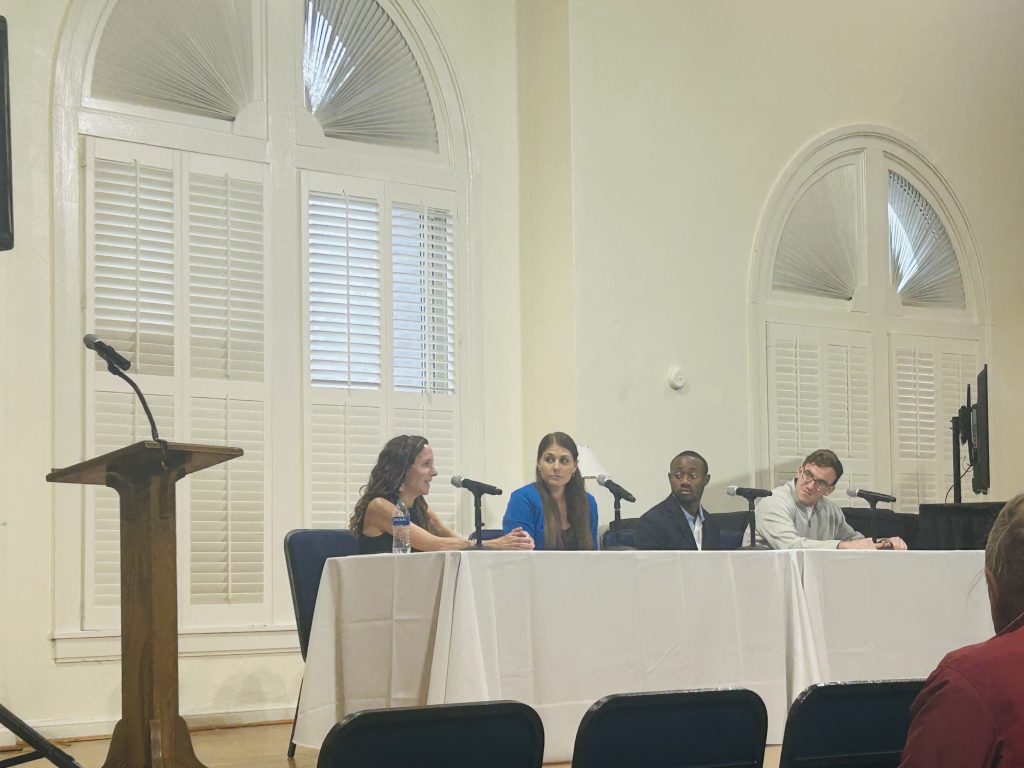The furious dribbles across the hardwood floors. The seas of blue consuming the stands. Anyone who has ever attended, or even heard of the legendary Duke Vs UNC basketball game likely holds a vivid picture of the intense nature of this game.
While there is little question that this multi-million dollar event is the most beneficial of the year for both programs, a recent collaboration between the faculty from both schools raised the question: Beneficial for whom?
Friday, Nov. 10, I had the pleasure of attending a sports symposium organized by Duke and UNC with a focus on the exploitive nature of collegiate athletics. Duke hosted, but both schools brought in a multitude of faculty members, attorneys, and media professionals to discuss a wide range of topics regarding the relationship between college sports and the detrimental effects on athletes. Despite the immense range of topics, there was a common consensus among all speakers and attendees of the event: Some things must change.

Panelists (l-r) Victoria Jackson, Maddie Salamone, Olu Kopano, and Payton Barish.
They said there are three major problems that currently plague the world of college athletics: the lack of representation, the lack of long-term benefits, and most importantly, the illusion of success portrayed to these athletes.
Among athletes, a lack of representation in decision-making spheres appears to be a double-sided problem. Any remedy seems far-fetched without major structural changes.
A number of decision-making bodies exist for the purpose of addressing athletic issues and decisions. One of the most notable is the NCAA’s Student-Athlete Advisory Committee (SAAC), a representative body created for the purpose of granting athletes a voice. However, its limited scope, the athletes’ lack of knowledge on certain issues, and the lack of authority granted to the athletes’ decisions highlight the conference’s inability to serve as a proper representative body.
Many attribute this lack of representation to the fact that athletes are stretched far too thin, stripping them of the time needed to truly understand the expectations of the rules established by the NCAA. Symposium speakers argued that time and resources need to be built into their schedules, and not used as an extra burden, to grant them clarity on their rights, structural changes, and shifts in power that affect them.
Panelists also said many athletes emerge from college without developing fundamental life skills such as being able to do their own taxes. Many are left unable to properly afford to manage injuries sustained in college as they aren’t granted any long-term/lifelong healthcare services. And many international athletes are unequipped to deal with the visa-based issues that may arise from an inability to not only manage expectations set by their sport but also those set by their schools, and even ICE.
Throughout the symposium, a common point made was the fact that there are abundant staff present for the development of the game, but few staff for the development of the athletes as individuals.
This idea formed the second consensus of the discussion: there needs to be a more intentional focus on the resources for athletes, not only based in athletic performance, but also within the scope of mental, physical and long-term health across the board.
Finally, the illusion of success offered to athletes was a major grievance expressed during the symposium. When signing athletes on to the team, it is customary for recruiters to essentially promise athletes an idea of future success, whether it be through going pro or earning financial liberation. This, however, has proven to not be the case for everyone, as most careers end after those four years of college. This idea is detrimental to athletes who’s intense dedication and tunnel vision toward these goals often prevent them from developing a Plan B. Many become susceptible to difficulties recovering from this, fueled by a lack of resources and representation.
While athletes are now able to receive compensation for their “names, images and likenesses” (NIL), it is still breadcrumbs compared to the amount going to coaches and staff. This illusion is fueled by scholarships and third-party sponsorships that allow the parties currently bringing in million dollars salaries to under-compensate the source of this income: the athletes themselves. Many at the symposium concluded that this was a job for the athletes to fix, while others claimed that this problem belonged to the coaches, recruiters, and universities. Both parties, however, agreed that this change must come immediately, or these issues will continue to hurt many more athletes in the long run.

Coordinator and panelists (l-r): Tracie Canada, Javier Wallace, Nathan Kalman-Lamb, Erianne Weight and Duane Ballen.
The symposium was a wonderfully unifying event that started a conversation around countering the harmful effects and structural disadvantages faced by collegiate athletes. It showed the ways in which athletes have spent years supporting a system that doesn’t fully support their needs.
Victoria Jackson, a historian and former long-distance runner from Arizona State University, described efforts at bringing an end to these disparities as a “courageous act.” However, if the two great rival schools can set aside their decades-long competition for the purpose of improving the lives of their athletes, then change in this sphere is completely fathomable for athletes everywhere.

Keynote speaker Dr. Victoria Jackson of Arizona State University during her opening statements.

By Gabrielle Douglas, Class of 2027
